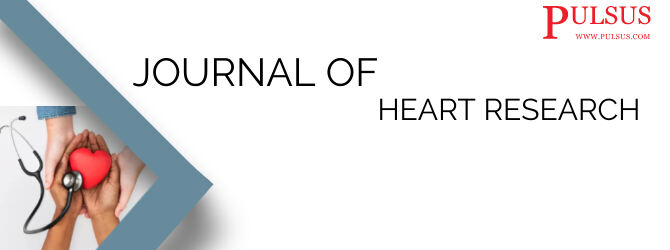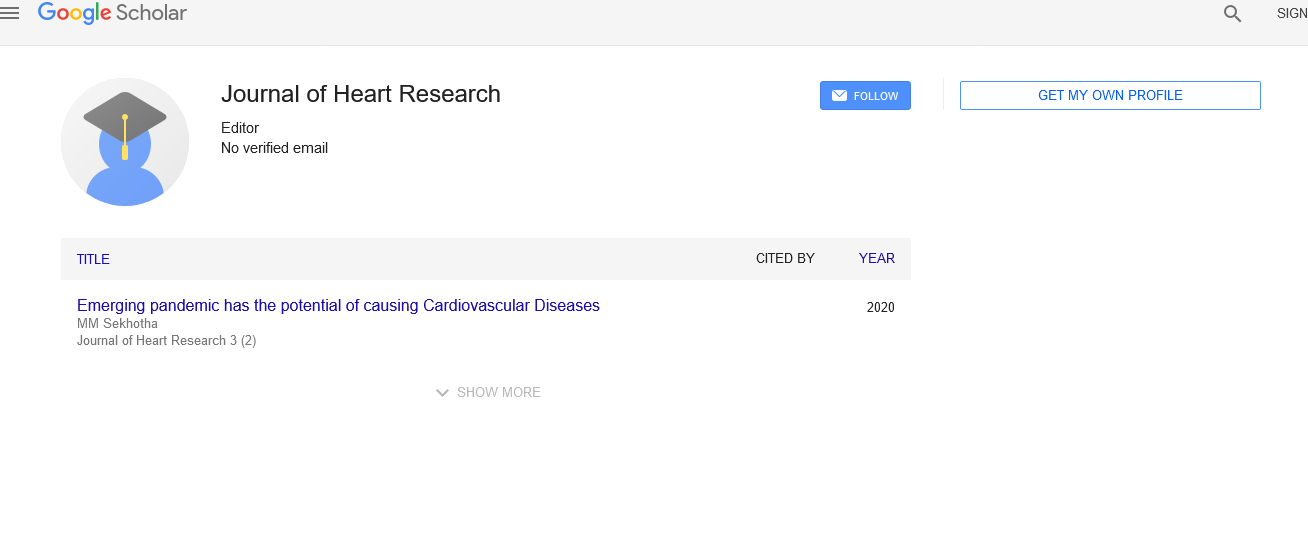Systolic Hypertension and a broadening of the pulse pressure
Received: 01-Oct-2022, Manuscript No. puljhr-22-5554; Editor assigned: 03-Oct-2022, Pre QC No. puljhr-22-5554 (PQ); Accepted Date: Oct 27, 2022; Reviewed: 16-Oct-2022 QC No. puljhr-22-5554 (Q); Revised: 23-Oct-2022, Manuscript No. puljhr-22-5554 (R); Published: 30-Oct-2022, DOI: 10.37532/ puljhr.2022.5(5).01-02.
Citation: Roato F. Systolic hypertension and a broadening of the pulse pressure. Int J. Heart Res. 2022; 5(5):1-2.
This open-access article is distributed under the terms of the Creative Commons Attribution Non-Commercial License (CC BY-NC) (http://creativecommons.org/licenses/by-nc/4.0/), which permits reuse, distribution and reproduction of the article, provided that the original work is properly cited and the reuse is restricted to noncommercial purposes. For commercial reuse, contact reprints@pulsus.com
Abstract
INTRODUCTION
The aorta stiffens with age due to increased collagen and decreased elastin. Increased Transforming Growth Factor (TGF) activity promotes the formation of collagen in the aortic wall. Elastin depletion is caused by the activity of various elastases, including Matrix Metalloproteinases (MMPs) like MMP-9 and MMP-12, as well as the overexpression of cysteine proteinases like cathepsins S, K, and L, and the serine proteinase neutrophil elastase. These changes in the aorta's extracellular matrix play a significant role in its distensibility. Reflected waves and systolic pressure rise as stiffness increases. However, as people age, their diastolic pressure tends to fall. As the aortic pulse wave velocity increases, so does the pulse pressure. In fact, pulse pressure is an independent risk factor for cardiovascular events [1].
The urge for coronary perfusion, which primarily takes place during diastole, decreases as diastolic pressure rises, promoting the onset of myocardial ischemia. Systolic pressure increases with an increase in Left Ventricular (LV) afterload, which is a major indicator of myocardial oxygen demand. Chronic exposure to high systolic pressure results in LV hypertrophy, which increases myocardial oxygen demand even more. In the pressure-overloaded LV, TGF-, angiotensin II, and the mineralocorticoid aldosterone are mediators that mechanistically support LV hypertrophy and fibrosis. A "perfect storm" of decreased oxygen supply vs. increasing oxygen demand takes place as a result of systolic hypertension and declining diastolic pressure brought on by ageing. This additional limitation on oxygen flow often increases the already high oxygen demand because coronary atherosclerosis worsens with ageing [2].
Along with reduced main artery function, chronic hypertension modifies the myocardial microvasculature. It is possible for the tunica medium of cardiac arterioles to thicken,which would impede vasomotion and restrict LV perfusion. Age-related effects on increased systolic and lowered diastolic pressure result in myocardial ischemia. In cardiac tissue exposed to increased systolic and decreased diastolic pressure, the same mechanisms implicated in the creation of aortic stiffness are probably also engaged in the regulation of arteriolar remodelling. These pathophysiological processes, which are important age-related initiators of CV issues in the elderly, are not well understood sufficiently [3].
While calcium in CV structures builds up with age, calcium in the axial skeleton falls with age. There has been an increase in awareness of the systemic nature of conditions like calcific aortic stenosis. It has been suggested that inflammation may function as a physiological factor in CV calcification. Strong human genetic studies suggest that lipoprotein (a) is also involved in the pathogenesis of aortic valve calcification [4].
According to more than two decades of devoted research, elevated oxidative stress and inflammation are the main causes of cardiovascular ageing. Yet, both asymptomatic and high-risk patients did not experience a reduction in CV events after using universal antioxidant supplements such vitamin E and -carotene. Anti-inflammatory therapy, such as anti-TNF drugs, has not been demonstrated to lower morbidity and mortality in patients with chronic heart failure. Finally, lifestyle modifications like calorie restriction or consistent endurance exercise may decrease the development of vascular ageing by increasing SIRT1 levels, PGC-1 dependent mitochondrial biogenesis, eNOS functionality, and antioxidant response via enhanced Nfr-2 activity. The application of the basic and clinical science addressed here should better equip us to handle the burden of CVD in our ageing population [5].
References
- Vaccarino V, Berger AK, Abramson J, et al. Pulse pressure and risk of cardiovascular events in the systolic hypertension in the elderly program. Am j cardiol., 2001 Nov 1;88(9):980-6.
- Neki NS, Tokunaga M, Toru T, et al. Hypertension in the elderly. World Heart J. 2013 Apr 1;5(2):101.
- Kaplan NM. New issues in the treatment of isolated systolic hypertension. Circulation. 2000 Sep 5; 102(10):1079-81.
- Wilkinson IB, Cockcroft JR. Mind the gap: pulse pressure, cardiovascular risk, and isolated systolic hypertension. Am j hypertens. 2000 Dec 1;13(12):1315-7.
- Pannarale G. Optimal drug treatment of systolic hypertension in the elderly. Drugs aging. 2008 Jan; 25(1):1-8.





